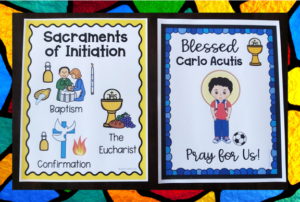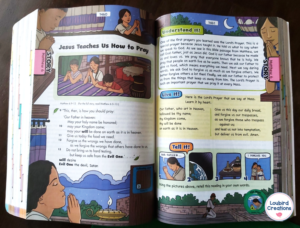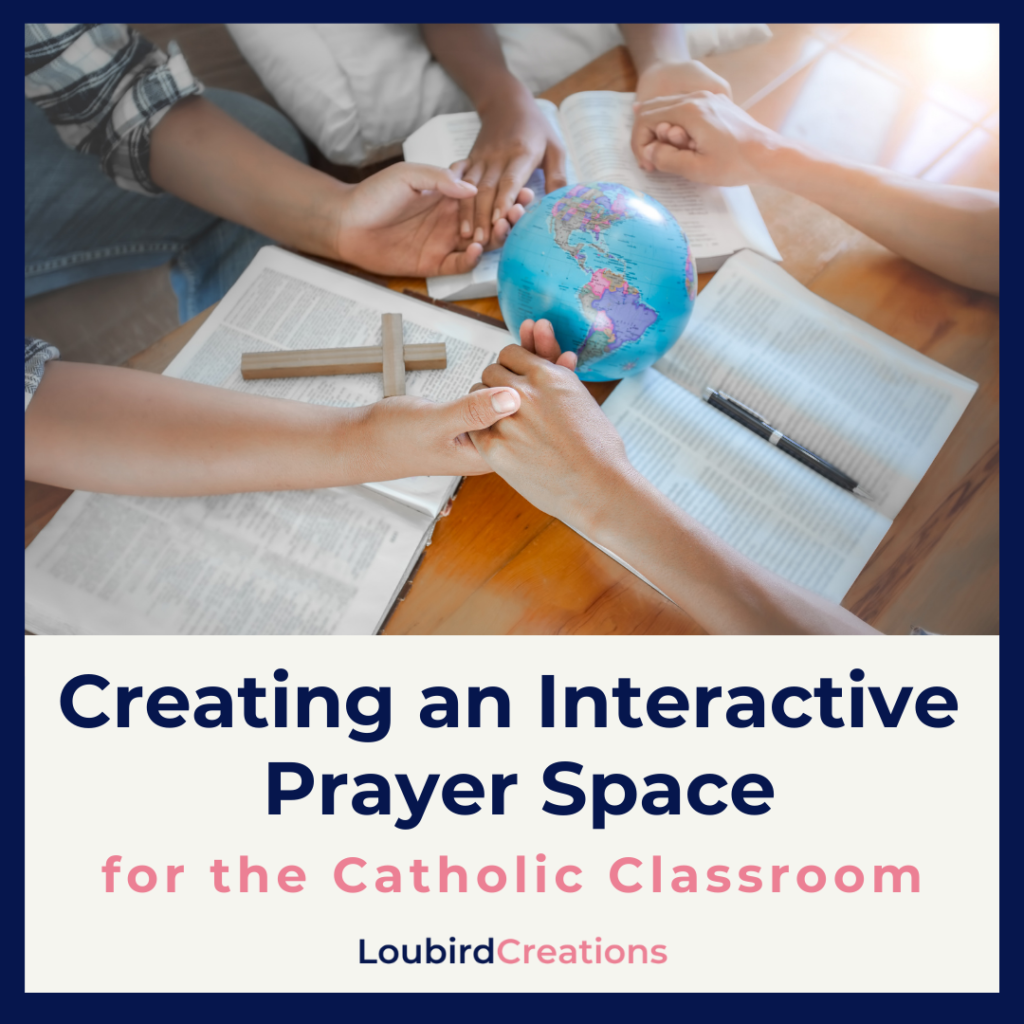Have you ever taken the time to set up a beautiful Catholic prayer table at the beginning of the year, only to see your students walk past it each day without engaging? Check out the following 7 tips for creating a prayer space that children will utilize and explore throughout the year!
#1 Find the Right Space
First, find a space in your classroom where you can place objects throughout the year that is also in an area that has enough room for students to gather. It could be a small table, countertop, or even the top of a short bookshelf. Traditionally, many teachers place a Catholic prayer table near the classroom door, so that students will pass it multiple times a day.
#2 Make it part of the Classroom Routine
Consider gathering around the prayer space together as a class, perhaps once a week at the beginning of the day or to start your religion lesson. Take time to either discuss what students see at the space, or simply pray together. Remember to engage by asking questions! “Do you see anything different on our prayer table today? Why do you think that saint card or statue is there today? What have we been learning about that we could add to our prayer space?”

#3 Highlight the Liturgical Season
Use different colored tablecloths as a base for your prayer space, coordinating with the colors of each Liturgical Season, purple for Advent/Lent, green for Ordinary Time, etc. Use it as a discussion point in your teaching, for example: “What color was the priest wearing at Mass today? Who can tell me why he was wearing that color? Did you notice that is the same color at our prayer table? What color should our next tablecloth be?”
**Budget-friendly tip: If you don’t have tablecloths, use pieces of felt or construction paper as your base.

#4 Make it Sensory
Remember to use the senses to give your students a more hands-on experience. Before you pray as a class, consider using holy water to make the Sign of the Cross and light a candle (or use a classroom-friendly battery-operated one).
Rotate objects in the space that they can touch, read, and explore, based on your studies and the liturgical season. Try to change them every few weeks, so that there is always something new to discover when students visit the space. Think outside the box… a figure or picture of a dove to represent the Holy Spirit, a shamrock to introduce your study of the Blessed Trinity, Christmas ornaments showing the Nativity or a star for Epiphany.
Encourage your students to contribute to the space. Ask if they have items at home that they could share with the class (with their parents’ permission), for example small statues, a family rosary, scapular, holy cards, etc.
**Extra tip: This is also a great opportunity to give your early finishers new projects to work on. They could draw a picture or even make a model using craft supplies to construct a topic you’ve been studying.
#5 Incorporate Walls into the Space
Use the wall or a bulletin board behind your prayer space as an area to rotate images of content, such as prayer posters or pictures of Saints, that you are studying in religion class. You could also hang items from strings in the ceiling, or clip papers to blinds if your space is near a window.
I highly encourage you to display student work at the space to give children a sense of ownership of the area.

Posters of Current Topics and Saint Studies
#6 Include an Intentions Prayer Box
As a class, make it a daily habit to dedicate one of your prayers during the day to the special intentions in the class prayer box. At the beginning of the year, I would suggest making it part of your morning work once a week to leave a slip of paper on each student’s desk in the morning and ask them to write a name of someone they would like to pray for and put it in the intentions box. Then, leave small slips of paper and pencil for students to write their intentions throughout the year.

#7 Don’t forget a Children’s Bible!
Simple tip – make sure the Bible on your prayer table is OPEN to a story that you’ve read or studied together as a class. Tell students and invite them to read it again on their own. They will be much more likely to engage with the Word if it’s a story that is familiar to them, rather than simply placing a closed Bible on the table.

For more tips on how to incorporate Catholic Identity, check out this article on Catholic Identity from the Moment you walk through the Classroom Door.









2 Responses